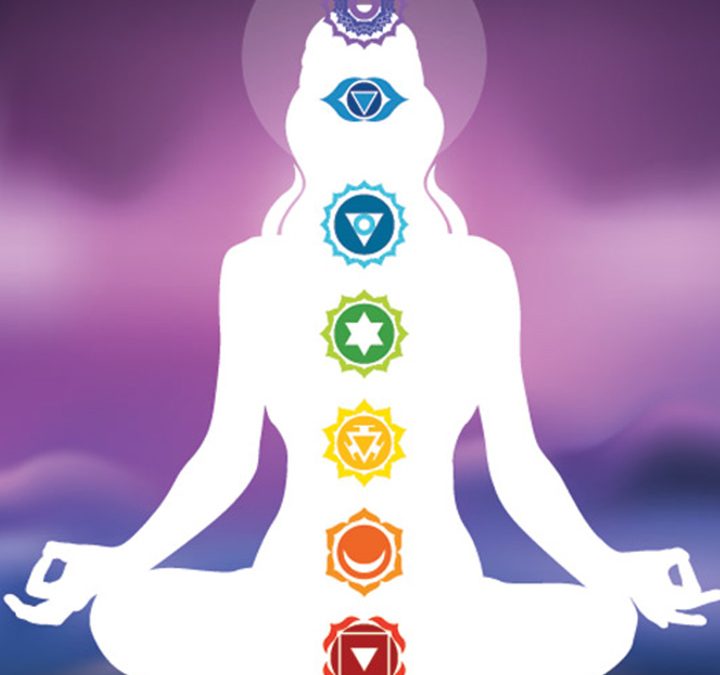Chakras and Yoga
Chakra has strong and invisible control in your life. Our capabilities and experiences are profoundly influenced by the chakras. Recognize them and practice yoga with them. The Tantrik yogis recognized that in order to live a new life—one that feels more secure, sublime, and socially connected—we must bring about change from the inside out. Working with the chakras, the body’s seven energy centers is one of the most effective ways to change the inner reality.
In Sanskrit, chakra means “spinning wheel.” The 7 chakras in your body, according to the yogic perspective, are a convergence of energy, ideas, and physical manifestations. Through these wheels, our consciousness (mind) is projected, and this greatly affects how we see reality, including our emotional responses, wants or aversions, level of confidence or fear, and even the appearance of physical symptoms.
We can start to remove any barriers that could be preventing us from reaching our full potential by focusing on these 7 energy centers throughout our yoga practice.
The 7 chakras
Muladhar Chakra (Root)
The root chakra is located on the pelvic floor. It serves as our foundation and ties us to the planet. It makes us physically robust and secure while keeping us rooted in embodied reality. It contains the instincts that drive us to eat, sleep, have sex, and survive. It is also the domain of our phobias and avoidances. Muladhara is significant because it harbors our most potent latent potential (Kundalini Shakti). By practicing yoga and meditation, we can start to awaken the dormant force that resides in our roots. Deep lunges, squats, chair poses, warrior stances, and hip-openers are some of the poses that assist us to focus on this center.
Svadishthana Chakra (Pelvic)
Our sacrum is where the Svadhisthana chakra is housed. It is the seat of the reproductive system and the source of our wants. We are able to access our capacity for both sensual pleasure and self-healing when our consciousness is allowed to flow through this region. We might be controlled by our attachments if this chakra is unconscious to our consciousness. As with the root chakra, this center is accessed by asanas including forward bends, hip-openers, deep lunges, and squats.
Manipura Chakra (Navel)
The third of the seven chakras, or navel chakra, is situated in the navel and is linked to the digestive system, the element of fire, as well as personal power and purpose. Manipura is the center of your body’s energy, as it contains a significant portion of your physical vitality. When consciousness is allowed to flow freely in this center, transformational energy is available to us. We may suffer imbalances linked to aggressive ambition, heightened ego, and the quest for personal power when this area is obstructed. The best asanas for cleansing and treating the Manipura are twists.
Anahata Chakra (Heart)
According to the Himalayan Tantric tradition, the heart chakra, located in the middle of the chest, is the most potent chakra of all and the actual “seat of the soul.” We might think of the heart as the meeting place for the broad range of our human emotional experience because it is connected to the lungs and the element of air.
The best qualities of a person—compassion, unwavering love, and unwavering confidence in the Divine—can radiate from the heart. However, it also has the power to reflect our most intense emotions of uncertainty, disappointment, loneliness, and hopelessness. Work with pranayama, heart-centered meditation, and heartfelt prayer to increase the light in the heart chakra. Backbends will also aid in opening the heart’s energetic centers.
Vishuddhi Chakra (Throat)
The fifth chakra, known as Vishuddhi, corresponds to the element ether. It is the active center of the endocrine glands, which control speech and hearing as well as metabolism. This chakra is all about opening up a spiritual channel of communication with the Divine. The throat can be cleaned and repaired using chant, Jalandhara Bandha, and asanas including Halasana, Ushtrasana, Sarvangasana, and Matsyasana.
Ajna Chakra (Third-Eye)
In the middle of the brain, at eyebrow level, is the Ajna chakra, or “command center.” It is where the Ida and Pingala nadis, two significant energetic streams in the body, converge and where the mind and body come together. It is physically related to growth, development, and the pituitary gland. We experience increased intuition, inner understanding, and a sense that we are much more than a physical body when relaxed consciousness flows here. We can perform alternate nostril breathing exercises (nadi shodhana) and meditations that are specifically directed at this place to heal and purify it. Inverted poses like Sirshasana, Adho-mukha vriskhasana, etc. are helpful for this chakra.
Sahasrara Chakra (Crown)
The crown chakra, the final of the seven chakras, is what connects us to all that exists outside of our particular ego. It is everything that exists outside of our finite mind, as well as our wants, desires, and emotional experiences. It serves as the entrance and starting place for enlightenment. This is beyond the physical and mental realm. Constant meditation or mindfulness can help to awaken this chakra.
